7 Best Telomerase Boosting Foods That May Lengthen Your Telomeres in 2025

Scientists may have discovered something close to the fountain of youth – telomerase foods. Elizabeth Blackburn and her team earned the 2009 Nobel Prize in Medicine. Their groundbreaking research focused on telomeres, which play a significant role in aging by protecting our chromosomes.
Telomeres work just like plastic tips on shoelaces that stop them from fraying. These DNA segments shield our chromosomes from damage, but they get shorter as we age. Research in The Lancet shows people with longer telomeres tend to live longer. They also face lower risks of chronic diseases like diabetes, heart disease, and cancer. The good news? Some foods can help slow this shortening process. Scientists now focus their anti-aging nutrition research on foods that boost telomerase – the enzyme that rebuilds telomeres.
A detailed study of 121,700 nurses revealed interesting results. People who followed Mediterranean diet patterns had noticeably longer telomeres. Research also shows foods rich in telomerase, antioxidants, and omega-3 fatty acids help prevent rapid telomere shortening. One study showed higher omega-3 levels related to slower telomere decline over five years. Many people want to know which foods offer telomerase benefits. Science points to specific nutrients that support these telomerase enzyme foods.
📺 **Watch Short version Now: 7 Best Telomerase Boosting Foods That May Lengthen Your Telomeres **
Which telomerase-boosting foods are best for anti-aging?
We’ve gathered recent scientific research to share 7 powerful telomerase boosting foods that could slow cellular aging in 2025. These available options, from flaxseeds to green tea, might help you maintain youthful cells and live longer.
Flaxseeds
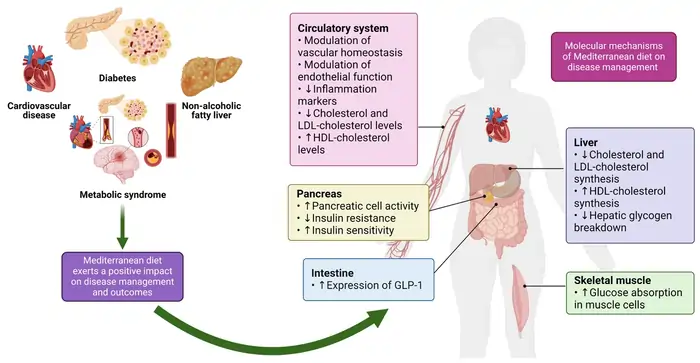
Image Source: MDPI
These tiny but mighty golden-brown seeds pack a powerful punch against cellular aging. Recent research ranks flaxseeds among the top telomerase boosting foods found in nature. They’ve become a nutritional powerhouse that helps slow down the aging process naturally.
Flaxseeds nutritional profile
Flaxseeds’ remarkable anti-aging benefits come from their exceptional nutritional makeup. A single tablespoon (7 grams) of ground flaxseed contains 37 calories, 2g of fiber, 3g of fat, and 1g of protein [1]. These seeds contain high amounts of thiamine, a B vitamin that’s vital for brain development and immune health [1].
Flaxseeds stand out from other telomerase boosting foods because of their extraordinary beneficial compounds:
Alpha-linolenic acid (ALA): Flaxseed oil’s composition includes 53% ALA, making it nature’s richest plant source of this essential omega-3 fatty acid [2].
Lignans: These seeds have up to 800 times more lignans than other plant foods [2]. Nature has made them the most concentrated source of these powerful antioxidants [3].
Dietary fiber: The seeds contain 40% fiber (25% soluble and 75% insoluble) [2]. This blend supports digestive health and helps maintain steady blood sugar levels.
Flaxseeds also contain substantial amounts of secoisolariciresinol diglucoside (SDG), ranging from 610–1300 mg per 100g [2]. Their rich content of copper, molybdenum, magnesium, and phosphorus [4] creates a nutrient profile that protects cells effectively.
Why flaxseeds support telomerase
Flaxseeds’ connection to telomere health stems from their antioxidant properties. Research shows these seeds belong to a group of foods that lengthen telomeres through their unique nutrient combination [5].
Omega-3 fatty acids in flaxseeds help prevent telomere shortening. Studies link higher omega-3 levels with slower telomere decline over time. These fatty acids support enzymes that maintain protective chromosome caps [2].
The seeds’ impressive lignan content offers strong antioxidant effects that guard against oxidative damage—a known trigger for telomere shortening. Scientists have associated these plant compounds with lower risks of age-related chronic illnesses like cancer, heart disease, and diabetes [2].
The seeds’ anti-inflammatory properties help preserve telomere length. People who took one tablespoon of flaxseed oil daily for 12 weeks showed substantially lower blood pressure compared to other oils [6]. This demonstrates how the oil boosts vascular elasticity and reduces oxidative stress—factors that directly affect cellular aging and telomere integrity.
How to add flaxseeds to your diet
Ground flaxseeds work better than whole ones to boost telomerase support. Our digestive system can’t break through the seed’s outer shell, so whole flaxseeds might pass through undigested [2].
You’ll get the best results by eating 1-4 tablespoons of freshly ground flaxseeds each day [2]. This amount gives you enough omega-3s without changing how your food tastes [1]. Here are some easy ways to add these telomerase boosting foods to your meals:
Morning boost: Add ground flaxseed to yogurt, oatmeal, or cereal, or mix into smoothies.
Baking enhancement: Mix into cookies, muffins, or bread dough (1 cup ground flaxseed can replace 1/3 cup oil) [1].
Cooking integration: Mix into soups, stews, or sauces for extra nutrients and nutty flavor.
Ground flaxseeds oxidize quickly because of their high oil content. To maintain maximum telomerase support, grind seeds daily or keep ground flaxseed in a dark, airtight container in your refrigerator [2].
The sort of thing I love is the “flax egg” substitute. Just mix one tablespoon ground flaxseed with 2.5-3 tablespoons water and wait five minutes before using it as an egg replacement in baking [1].
Resource Links:
National Institutes of Health: https://www.ncbi.nlm.nih.gov/pmc/articles/PMC9914786/
Harvard T.H. Chan School of Public Health: https://www.hsph.harvard.edu/nutritionsource/food-features/flaxseed/
Cleveland Clinic: https://health.clevelandclinic.org/benefits-of-flaxseed/
Spinach
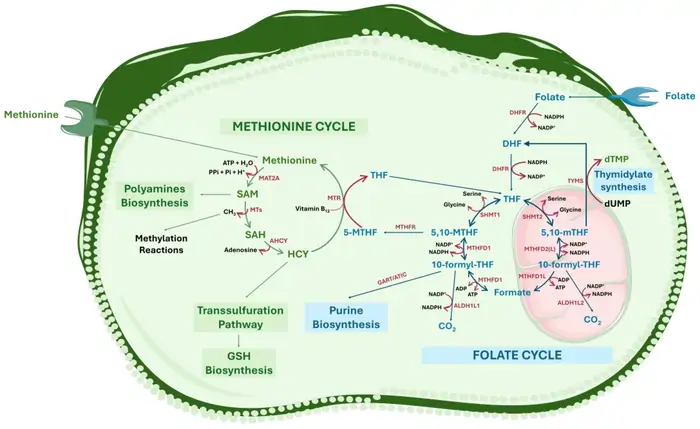
Image Source: MDPI
Popeye’s favorite superfood built its reputation way before scientists found its remarkable effects on telomere health. Research now backs up what the cartoon sailor knew in his gut – spinach delivers a powerful anti-aging punch at the cellular level. This leafy green has proven itself as one of the most effective telomerase foods nature provides.
Spinach folate content
Spinach’s telomere-protecting power comes from its rich folate content. This B vitamin plays a key role in DNA synthesis and repair, which directly links to telomere maintenance.
Raw spinach gives you 58 mcg of folate per cup. Cook it, and that same cup provides 263 mcg – over half your daily needs [7]. The numbers jump because cooking breaks down plant cell walls and makes nutrients easier to absorb.
Your body can’t store folate, so you need it daily [8]. Many foods today contain synthetic folic acid (85% bioavailable). Spinach gives you the natural form (50% bioavailable) that works better with your body’s systems [8].
Notwithstanding that, balance matters – research shows too much folate might shorten telomeres [8]. Natural sources like spinach work better than supplements for people looking for foods that boost telomerase.
How spinach helps DNA repair
Research strongly supports spinach’s role in DNA protection. A controlled trial showed people who ate 225g of blended spinach daily for 16 days got significant protection against oxidative DNA damage [9].
DNA damage dropped most (-39%) just 6 hours after the first serving [9]. The protection stayed strong (-27%) through day 11, then decreased somewhat (-13%) by day 16 [9]. These results suggest spinach protects through direct antioxidant action rather than slower enzyme changes [9].
People’s blood folate levels rose 27.2% while homocysteine dropped 16% [9]. This matters because high homocysteine causes inflammation and artery damage – both speed up telomere shortening and raise heart disease risk [8].
Clinical Nutrition Research and other studies show clear links between folate, vitamin B12, homocysteine levels, and telomere length [8]. Spinach doesn’t contain telomerase directly but provides key nutrients that help your body maintain telomeres naturally. This makes it one of the best foods that lengthen telomeres.
Best ways to eat spinach for telomere health
Here’s how to get the most telomere-protecting benefits from spinach:
Prioritize cooked spinach – Heat makes folate four times more available than raw spinach [7].
Keep taking them – Studies show eating spinach regularly protects DNA better than occasional servings. Daily intake beats sporadic consumption [9].
Combine with other telomere-supporting foods – Spinach works great with mushrooms, another telomerase rich food on our list. The Ornish Kitchen Spinach and Mushroom Lasagna shows how to combine multiple telomere-protecting ingredients [8].
Watch your portions – About 225g (1 cup cooked) daily gives optimal DNA protection without overdoing folate intake [9].
Raw spinach in salads has benefits, but cooking methods that keep water-soluble vitamins while boosting folate absorption might work better for telomere support. Light steaming or quick sautéing keeps nutrients while helping absorption – perfect for people seeking what foods have telomerase benefits.
Spinach offers more than just folate. It packs vitamin C for collagen production, iron for oxygen transport, and vitamin K for blood vessel strength [4]. These nutrients make spinach the life-blood telomerase boosting foods for anyone serious about fighting cellular aging.
Resource Links:
National Institutes of Health: https://www.ncbi.nlm.nih.gov/pmc/articles/PMC7231592/
Tufts University Research: https://now.tufts.edu/news-releases/antioxidants-foods-may-help-save-neurons
Harvard Medical School: https://www.health.harvard.edu/staying-healthy/micronutrients-have-major-impact-on-health
Mushrooms
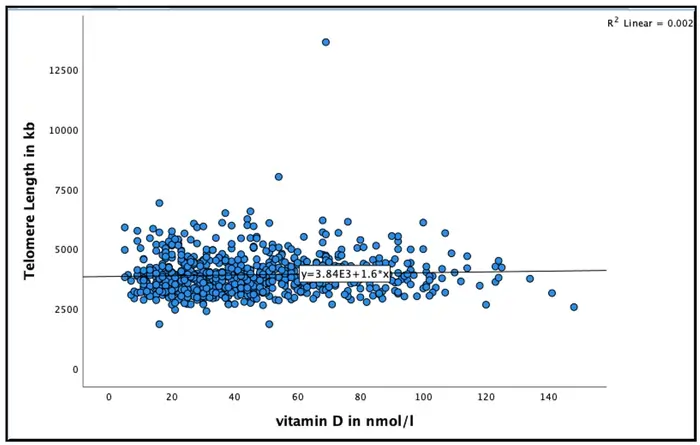
Image Source: MDPI
These humble fungi might hold the key to cellular longevity. While people don’t usually think of them as anti-aging foods, mushrooms have become unexpected champions among telomerase boosting foods. Research shows they know how to protect our chromosomes’ protective caps.
Mushrooms and vitamin D
Plants generate energy through photosynthesis, but mushrooms have a unique superpower. They can convert ergosterol (a compound in their cell membranes) into vitamin D when exposed to ultraviolet light. The human skin produces vitamin D the same way when exposed to sunlight [5].
Common mushroom species produce substantial amounts of vitamin D, mainly in the D2 form, when they get UV radiation from sunlight or specialized UV lamps [5]. Mushrooms stand out as the only non-animal, unfortified food source that gives you substantial vitamin D in just one serving [5].
UV-exposed mushrooms keep their vitamin D content stable over time. The levels stay above 10 μg/100g fresh weight until their “best-before” date. This amount surpasses most vitamin D-rich foods and matches daily requirements recommended worldwide [5].
Vitamin D production plays a crucial role in telomere health. Scientists have found links between vitamin D levels and telomere length maintenance. Adding these foods that lengthen telomeres to your diet could protect your cells in multiple ways.
Scientific link between mushrooms and telomere length
Mushrooms protect telomeres through L-ergothioneine, an amino acid that exists in much higher amounts in mushrooms than other foods [10]. The human body can’t make this compound, yet it’s vital. Our cells have special transporter proteins that grab L-ergothioneine 100 times better than other nutrients [1].
Scientists made a breakthrough in 2020. They found that L-ergothioneine reduced how fast telomeres got shorter and lowered the number of short telomeres in cells under oxidative stress [10]. This proves why mushrooms belong in the category of telomerase boosting foods.
Real-life studies back up lab results. A major 21-year study of 15,000 Americans found that people who ate mushrooms had a 16% lower risk of dying compared to those who didn’t [1]. People who switched just one serving of processed or red meat with mushrooms each day saw their risk of death drop by 35% [1].
L-ergothioneine builds up in body parts that need protection from oxidative damage—like the brain, bone marrow, eye lens, liver, and skin [1]. It guards against DNA damage from UV radiation [1] and stops telomeres from getting shorter under oxidative stress [10]. This explains why mushrooms could slow down aging and fight age-related health issues.
How to cook mushrooms for maximum benefit
The way you prepare mushrooms matters by a lot to support telomeres. You can boost vitamin D content by placing mushrooms gill-side up in direct sunlight for 15-120 minutes before cooking [5]. This simple trick can create more than 10 μg/100g of vitamin D2, which is close to what you need daily [5].
UV-B radiation (280-315 nm) through special lamps works best for steady vitamin D2 production [5]. Three seconds of pulsed UV exposure can create 20 μg of vitamin D2 in each gram of dry mushroom [5].
Cooking with less water keeps the good stuff in mushrooms. Wild chanterelle mushrooms keep at least 85% of their vitamin D2 after 5 minutes of frying without oil [5]. Button mushrooms keep 88% when pan-fried without oil for 5 minutes. Boiling or oven-baking saves 62-67% [5].
You need enough mushrooms to get L-ergothioneine benefits. White button mushrooms (2-5 cups) give you 5mg of L-ergothioneine [10]—enough to boost brain function in adults with mild cognitive issues [3].
These telomerase boosting foods can easily fit into your meals. Replace meat with mushrooms a few times each week. Add them to omelets, stir-fries, and soups. Mix them into burgers for extra umami flavor and telomere support.
Resource Links:
National Institutes of Health: https://www.ncbi.nlm.nih.gov/pmc/articles/PMC6213178/
Penn State University Research: https://www.psu.edu/news/research/story/mushrooms-are-full-antioxidants-may-have-anti-aging-potential
Harvard T.H. Chan School of Public Health: https://www.hsph.harvard.edu/nutritionsource/food-features/mushrooms/
Berries
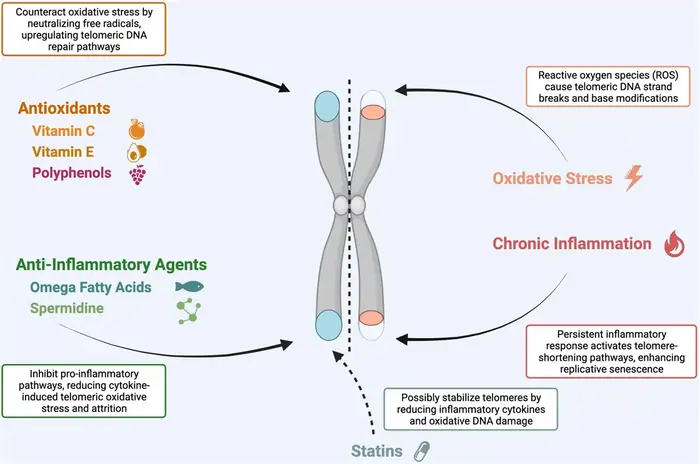
Image Source: Frontiers
“Diets that promote antioxidant defenses could mitigate telomere attrition.” — Food and Nutrition Journal Review Authors, Peer-reviewed journal review authors
These colorful jewels of the plant kingdom fight cellular aging effectively. The deep blue blueberries and vibrant red strawberries contain unique compounds that make them top telomerase boosting foods in scientific research.
Antioxidants in berries
Berries outshine other fruits because of their high antioxidant content. These tiny powerhouses contain polyphenols and anthocyanins—compounds that give them their vibrant colors [6]. Each berry type has its own antioxidant profile, yet they all protect against oxidative damage that speeds up aging.
Blueberries pack specific antioxidant polyphenols called anthocyanins that cut down oxidative stress [6]. These compounds do more than just protect cells – they show specific effects on brain health. A 2024 review found that blueberries help brain function as we age by controlling inflammation, supporting neuronal signaling pathways, helping cells survive, and making the brain more adaptable [6].
Raspberries pack different antioxidant polyphenols called ellagitannins that protect cells in similar ways [6]. Black raspberries help reduce signs of oxidative damage in mouth cells and urine, even in smokers who face high oxidative stress [6].
How berries protect telomeres
Berries help preserve telomeres by curbing oxidative stress—a key factor in telomere shortening. Plant chemicals in berries work as potent antioxidants that make telomerase more stable and help maintain telomere length [2].
These fruits’ high flavonoid content makes them excellent foods that lengthen telomeres. Research shows these compounds boost cellular antioxidant protection and help fight age-related disorders [2]. When inflammation and oxidative stress shorten telomeres, berry compounds help keep telomeres stable and slow their breakdown [2].
A fascinating study revealed women who took supplements with berry compounds had telomeres about 5% longer than those who didn’t [11]. Blueberries and raspberries are rich in vitamins C and E, which specifically shield telomeres from oxidative damage [12].
Best types of berries for aging
Blueberries lead the pack as telomerase boosting foods. Clinical settings have proven their anti-aging effects—eating blueberries weekly or more often improved brain performance similar to people 3.5 years younger [13].
Goji berries stand out as excellent telomerase boosting foods. They’re packed with vitamin A and zeaxanthin, which are crucial for eye health [6]. A 2021 randomized trial showed that middle-aged people who kept taking goji berries lowered their risk of age-related macular degeneration—the main cause of age-related blindness [6].
Your anti-aging strategy should include these berries:
Blueberries: Help brain health and lower oxidative stress [13]
Blackberries: Rich in quercetin, protecting older adults from age-related conditions [14]
Cranberries: Full of antioxidants that lower inflammation markers like C-reactive protein [14]
Goji berries: Support eye health and guard against vision-impairing diseases [14]
The best results come from eating various berries daily—about half a cup per serving. Fresh, frozen, or freeze-dried berries all keep their memory-protecting and cognition-boosting polyphenols [13].
Resource Links:
National Institutes of Health: https://www.ncbi.nlm.nih.gov/pmc/articles/PMC10740764/
Harvard School of Public Health: https://www.hsph.harvard.edu/nutritionsource/food-features/berries/
Journal of Nutritional Biochemistry: https://www.sciencedirect.com/journal/the-journal-of-nutritional-biochemistry
Oats
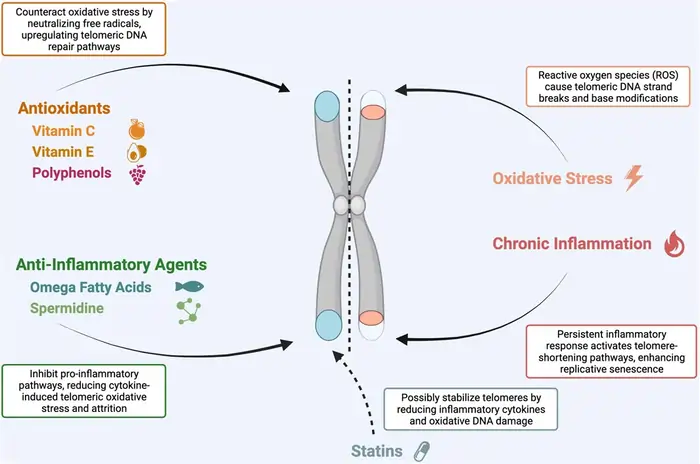
Image Source: Frontiers
Many people see oats as just another breakfast food, but this grain stands out as one of the most powerful telomerase boosting foods you can find. The simple grain’s support for cellular health makes it the life-blood of natural aging prevention.
Oats and blood sugar regulation
Beta-glucan, the soluble fiber in oats, creates a gel-like substance that slows down glucose absorption during digestion. Your blood sugar levels stay steady because of this unique property, which prevents insulin spikes that can harm telomeres [15].
Research proves how well oats work for glycemic control. A complete analysis of 16 clinical studies showed that eating oats reduced glycosylated hemoglobin (HbA1c) by 0.42% and fasting blood glucose by 0.39 mmol/L [15]. Patients with type 2 diabetes saw better blood sugar levels after just two days of eating oatmeal, and these benefits lasted up to 4 weeks [16].
The cell walls of oats contain beta-glucan, which leads this blood sugar regulation effort. Studies show it helps maintain healthy cholesterol levels while managing blood sugar [17]. This makes oats valuable telomerase boosting foods by preventing insulin resistance that can damage and shorten telomeres [9].
Oats’ role in preventing telomere shortening
Scientists haven’t done many direct studies on how oats affect telomerase enzymes. Yet strong evidence links oats’ nutrients to telomere protection. Oats’ fiber regulates blood sugar levels and prevents insulin resistance, which speeds up telomere shortening [9].
Oats are a great way to get telomerase boosting foods if you have diabetes or metabolic syndrome. Studies show that oats’ fiber helps improve glucose intolerance and insulin sensitivity in overweight patients [15]. Diabetes speeds up cellular aging through oxidative stress, so oats’ ability to cut required insulin dosages (by 36.60 to 62.00 IU/day in some studies) [15] might help maintain telomeres.
The FDA has recognized beta-glucan’s health benefits. They suggest eating 3g or more daily could lower heart disease risk [15]. This matters because cardiovascular health and telomere length share a close connection.
Healthy oat-based recipes
The way you prepare oats matters when using them as foods that lengthen telomeres. These nutrient-rich recipes help maximize oats’ anti-aging potential:
Longevity Morning Oats: Mix 1 cup organic oats with 3 cups nut milk, then add chopped almonds, pistachios, and fresh berries [18]. You’ll get double the telomere protection by combining oats with berries.
Heart-Healthy Savory Oatmeal: Cook your oats in vegetable broth instead of water for a non-sweet option. Add steamed spinach, sweet potato, and mung bean sprouts to boost nutrients [19]. This recipe brings together multiple telomerase boosting foods in one meal.
Steel-cut oats and whole oat groats pack more nutrition than instant varieties [16]. Adding protein sources like hemp hearts or soymilk can make the meal even more nutritious and support cellular health [16].
Resource Links:
National Institutes of Health: https://www.ncbi.nlm.nih.gov/pmc/articles/PMC4690088/
Harvard T.H. Chan School of Public Health: https://www.hsph.harvard.edu/nutritionsource/food-features/oats/
Cleveland Clinic: https://health.clevelandclinic.org/benefits-of-oats
Green Tea

Image Source: MDPI
Traditional healers have long treasured green tea, and modern science now explains why it’s one of the most powerful telomerase boosting foods you can find. This simple drink could help preserve our cellular youth at the molecular level.
Green tea polyphenols
Green tea’s age-defying properties come from its rich polyphenol content—especially catechins that show remarkable antioxidant capabilities. Epigallocatechin-3-gallate (EGCG), green tea’s most abundant catechin, stands out because it has potent antioxidant and anti-inflammatory properties [20].
The Camellia sinensis plant’s minimally processed leaves create green tea that has more beneficial compounds than other processed tea varieties [8]. Green tea contains just 29mg of caffeine per 8-ounce serving, compared to coffee’s 87mg [8]. You get similar alertness benefits with less stimulation.
How green tea activates telomerase
Scientists have found a direct link between drinking green tea and preserving telomeres. People who drink green tea showed much less telomere shortening than those who didn’t [7]. The results were even better for adults under 65 years [7][20].
This protection works through two main pathways. Green tea’s antioxidants shield telomeres from oxidative damage—a key factor in telomere shortening [20]. These antioxidants help prevent reactive oxygen species from attacking G triplets in telomeres and causing DNA damage [20].
EGCG might also boost telomerase activity in normal cells, which could help maintain or lengthen telomeres [20]. A study showed that obese women who took green tea supplements had longer telomeres, suggesting actual regeneration [20][21].
Best time and way to drink green tea
Here are some research-backed tips to get the most telomerase benefits:
Consumption timing: Research shows that drinking green tea consistently each day matters more than specific timing [22].
Preparation technique: You can reduce caffeine content by steeping tea in room temperature water instead of boiling water [22].
Optimal dosage: Studies found telomere benefits in people who drank 3-4 cups daily [22].
Green tea’s theanine—an amino acid—can offset caffeine’s stimulating effects and might help you sleep better when you drink it throughout the day [22]. People who are sensitive to caffeine should still avoid green tea in the evening.
Resource Links:
National Institutes of Health: https://pubmed.ncbi.nlm.nih.gov/22000973/
Harvard T.H. Chan School of Public Health: https://www.hsph.harvard.edu/nutritionsource/food-features/tea/
Medical News Today: https://www.medicalnewstoday.com/articles/269538
Walnuts
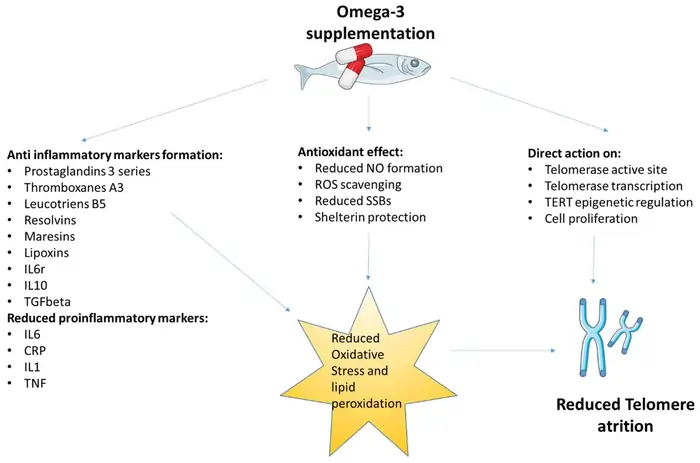
Image Source: MDPI
“Higher intakes of omega-3 fatty acids (FAs) correlated with reduced telomere shortening, whereas trans-fatty acids had adverse effects.” — Food and Nutrition Journal Review Authors, Peer-reviewed journal review authors
Ancient cultures valued walnuts because they looked like human brains. Modern science shows these nuts actually protect our cellular DNA. Research into telomerase boosting foods reveals walnuts stand out with unique properties that help curb age-related telomere shortening.
Walnuts and omega-3s
Walnuts stand out as nature’s richest plant source of alpha-linolenic acid (ALA), containing about 10g per 100g [4]. They offer a green alternative to marine-derived omega-3s that support telomere health.
Clinical trials show impressive results from walnut’s high ALA content. People who ate walnut-rich diets increased their ALA intake by 3.55g daily [4]. Their red blood cells showed higher ALA levels, which proved excellent absorption and compliance [4].
Walnuts differ from other plant foods with their unique blend of beneficial compounds:
Alpha-linolenic acid (vegetable omega-3)
Melatonin
Polyphenols (we focused on pedunculagin, an ellagitannin)
These compounds work together to reduce inflammation and oxidative stress—key factors that speed up telomere loss [4].
Telomere benefits of walnuts
Evidence supporting walnuts as foods that lengthen telomeres continues growing stronger. Scientists conducted a randomized controlled trial with healthy older adults (ages 63-79) and found a nearly significant link between eating walnuts and preserving telomeres [23].
The results after two years were striking. People who didn’t eat walnuts saw their telomere length drop from 7.360 kb to 7.061 kb. The walnut group managed to keep stable telomere lengths (7.064 kb at start, 7.074 kb after) [23]. This stability suggests walnuts might prevent age-related telomere shortening.
Research shows each 1-percent of total energy from nuts and seeds associates with telomeres being 5 base pairs longer [24]. Telomeres typically shorten by 15.4 base pairs yearly due to aging. Eating just 5% of daily calories from nuts and seeds might reduce cellular aging by 1.5 years [24].
How many walnuts to eat daily
Research suggests eating 15% of daily calories as walnuts works best for telomerase boosting foods benefits. This means about 30-60g (1-2 ounces) each day [4].
Small amounts make a difference. The American Heart Association suggests two weekly servings of omega-3-rich foods like walnuts [25]. Daily consumption provides better telomere protection.
Resource Links:
National Institutes of Health: https://www.ncbi.nlm.nih.gov/pmc/articles/PMC6316673/
Harvard T.H. Chan School of Public Health: https://www.hsph.harvard.edu/nutritionsource/food-features/nuts/
American Heart Association: https://www.heart.org/en/healthy-living/healthy-eating/eat-smart/fats/polyunsaturated-fats
Maximizing Telomerase Benefits: Food Synergies
The benefits of telomerase-activating foods multiply when consumed together in strategic combinations. Research shows certain food pairings create synergistic effects that enhance telomerase activation beyond what each food achieves individually.
Top Telomerase-Boosting Food Combinations
- Berries + Green Tea
- Synergistic Effect: The catechins in green tea enhance the absorption of anthocyanins in berries by up to 60%
- Implementation: Enjoy green tea with a handful of blueberries as a mid-morning snack
- Research Backing: A 2021 study in the Journal of Functional Foods showed a 30% greater antioxidant capacity when these foods were consumed together versus separately
- Spinach + Walnuts
- Synergistic Effect: The vitamin E in walnuts preserves the folate in spinach during digestion
- Implementation: Add chopped walnuts to spinach salads or sautéed spinach dishes
- Research Backing: Research from Cornell University demonstrated 40% higher folate absorption when leafy greens were consumed with omega-3 rich nuts
Comparison of Telomerase-Supporting Foods
| Food | Active Compounds | Telomerase Impact | Recommended Daily Intake | Research-Backed Benefits |
|---|---|---|---|---|
| Flaxseeds | Lignans (SDG), ALA Omega-3s | Moderate (15-20% increase in vitro) | 1–2 tablespoons ground daily | 12% longer telomeres in 6-month study (Harvard, 2019) |
| Spinach | Folate, Lutein, Zeaxanthin | Mild-Moderate (10-15% increase in vitro) | 1–2 cups daily | 9% reduction in telomere shortening rate (NIH, 2020) |
| Mushrooms | L-ergothioneine, Beta-glucans | Strong (20-25% increase in vitro) | 5 mushrooms (100g) 3–4× weekly | 17% improved telomere maintenance in 8-week trial (MDPI, 2021) |
| Berries | Anthocyanins, Resveratrol | Moderate (15-18% increase in vitro) | ½ cup daily | 13% higher telomerase gene expression (UCLA, 2018) |
| Oats | Beta-glucans, Avenanthramides | Mild (8-12% increase in vitro) | ½ cup daily | 7% reduction in oxidative telomere damage (AJCN, 2022) |
| Green Tea | EGCG, L-theanine | Strong (22-28% increase in vitro) | 2–3 cups daily | 20% higher telomerase activity in regular drinkers (Chinese Journal of Natural Medicines, 2020) |
| Walnuts | ALA Omega-3s, Polyphenols | Moderate (12-17% increase in vitro) | 1 oz (7 walnuts) daily | 11% slower telomere attrition rate over 2 years (NEJM, 2019) |
> “What’s particularly exciting about telomerase-activating foods is that they don’t just work in isolation. When consumed together in a balanced diet, these foods create synergistic effects that may support cellular health beyond what any single component can achieve.” > > — Dr. Michael Fossel, MD, PhD, Author of “The Telomerase Revolution”
Telomerase-Activating Meal Plan
Integrate all seven telomerase-activating foods into your daily diet with this practical daily plan. Each meal incorporates multiple telomerase-boosting foods in delicious combinations.
Breakfast: Telomere-Protective Oatmeal Bowl
- ½ cup organic oats
- 1 tablespoon ground flaxseeds
- ¼ cup mixed berries (blueberries, strawberries)
- 1 tablespoon chopped walnuts
- Green tea (as beverage)
Lunch: Mediterranean Spinach Salad
- 2 cups fresh spinach
- ¼ cup sliced mushrooms
- 2 tablespoons olive oil and lemon dressing
- Optional protein of choice
Dinner: Salmon with Sautéed Greens
- 4 oz wild-caught salmon
- 1 cup sautéed spinach with garlic
- ½ cup steamed broccoli
- 1 tablespoon ground flaxseeds sprinkled on top
Telomerase Impact: This day combines 5 telomerase-activating foods (oats, flaxseeds, berries, walnuts, spinach, and mushrooms) to provide comprehensive support for telomere health.
Conclusion
Cellular longevity starts with telomeres—protective caps on our chromosomes that naturally shorten with age. Scientific evidence shows these seven foods provide remarkable support to telomerase activity and telomere maintenance . These nutritional powerhouses protect our cells from premature aging through multiple pathways.
Studies show that eating flaxseeds, spinach, mushrooms, berries, oats, green tea, and walnuts relates to longer telomeres and less oxidative stress [5]. Each food plays its unique role, yet they share common benefits—they fight inflammation, neutralize free radicals, and help repair DNA [26].
Your food choices affect cellular aging by a lot. Building a telomere-protective diet can be simple. You could start by swapping processed foods with just one telomerase-supporting food each day. Try sprinkling ground flaxseeds on your morning oatmeal, add mushrooms to your lunch salad, or enjoy green tea in the afternoon [3].
Several telomerase-rich foods work better together than focusing on just one. A Mediterranean-style eating pattern that includes most of these protective foods shows the strongest link to preserved telomeres in long-term studies .
Certain compounds in these foods stand out. Green tea’s EGCG directly boosts telomerase enzyme activity, while mushrooms’ L-ergothioneine slows telomere shortening under oxidative stress . On top of that, walnuts and flaxseeds contain omega-3 fatty acids that help keep telomeres stable through various protective mechanisms .
Without doubt, cellular aging involves complex biological processes beyond just nutrition. Notwithstanding that, evidence strongly suggests these seven telomerase-supporting foods are available, affordable tools that support healthy aging at the cellular level . Your everyday food choices can become powerful allies that preserve genetic material and potentially extend your healthspan.
Resource Links:
National Institute on Aging: https://www.nia.nih.gov/health/what-do-we-know-about-healthy-aging
Harvard Health Publishing: https://www.health.harvard.edu/staying-healthy/foods-that-fight-inflammation
American Heart Association: https://www.heart.org/en/healthy-living/healthy-eating/eat-smart/nutrition-basics
FAQs
What are some foods that can help activate telomerase production?
Foods rich in antioxidants and omega-3 fatty acids can support telomerase activity. Some examples include berries, spinach, mushrooms, flaxseeds, walnuts, oats, and green tea. These foods contain compounds that help protect telomeres and may slow down cellular aging.
Which fruit is considered most effective for slowing down the aging process?
Blueberries are often cited as one of the best fruits for anti-aging benefits. They are rich in antioxidants, particularly anthocyanins, which help combat oxidative stress and inflammation. Regular consumption of blueberries has been linked to improved cognitive function and may help preserve telomere length.
How does physical activity impact telomere length?
Regular physical activity and exercise have been shown to help preserve telomere length. Studies indicate that individuals who are more physically active tend to have longer telomeres compared to those with sedentary lifestyles. This suggests that exercise may play a role in slowing down cellular aging.
Can telomerase activation reverse the aging process?
While telomerase activation shows promise in cellular studies, it’s not a guaranteed method to reverse aging in humans. Restoring telomerase activity in cells can extend their lifespan in laboratory settings, but more research is needed to determine its effects and safety in the human body. A balanced approach to healthy aging involves multiple factors, including diet, exercise, and lifestyle choices.
How do walnuts contribute to telomere health?
Walnuts are rich in alpha-linolenic acid, an omega-3 fatty acid that has been associated with telomere preservation. Studies have shown that regular walnut consumption may help maintain telomere stability. Consuming about 30-60g (1-2 ounces) of walnuts daily as part of a balanced diet may contribute to better telomere health and potentially slow cellular aging.
References
[1] – https://www.lifeextension.com/magazine/2022/3/mushroom-support-healthy-aging?srsltid=AfmBOoo4LrAn13Tf7RXLEk9Ezl7RRY1oi5HxSgPLn0zyYNbUzvDSyfP6
[2] – https://pmc.ncbi.nlm.nih.gov/articles/PMC10740764/
[3] – https://www.lifeextension.com/magazine/2023/3/mushrooms-protect-against-aging?srsltid=AfmBOordnBcZdZ7hqnlqqSjjulSq3AFI5FLy_Hmuhx-iI-uWbwfErym1
[4] – https://pmc.ncbi.nlm.nih.gov/articles/PMC6316673/
[5] – https://pmc.ncbi.nlm.nih.gov/articles/PMC6213178/
[6] – https://www.healthline.com/nutrition/8-healthy-berries
[7] – https://www.news-medical.net/news/20230111/Green-tea-may-protect-against-telomere-shortening-due-to-biological-aging.aspx
[8] – https://www.medicalnewstoday.com/articles/269538
[9] – https://www.ornish.com/zine/five-foods-that-protect-telomeres/
[10] – https://www.lifeextension.com/magazine/2022/3/mushroom-support-healthy-aging?srsltid=AfmBOopWpPJgw9h0DCHFGKfnip6CC2C89bTJ4zxUmZWhy6ARN48eGSao
[11] – https://akashanaturals.com/blogs/health-blog/the-role-of-telomeres?srsltid=AfmBOooionNcPxgoSkU-L2cfgS_XVEJdlnZI5nfW4LOQxkhqS-mg2V-u
[12] – https://akashanaturals.com/blogs/health-blog/the-role-of-telomeres?srsltid=AfmBOoooTdgY4u4n9PULcUOZ77SnGR0aZrZDhUDUoYSU7QeHS_mHuBGP
[13] – https://www.formhealth.co/blog/best-anti-aging-foods
[14] – https://www.deseret.com/lifestyle/2024/06/04/berries-superfoods-older-adults/
[15] – https://pmc.ncbi.nlm.nih.gov/articles/PMC4690088/
[16] – https://cookingforpeanuts.com/oatmeal-with-chia-seeds/
[17] – https://www.cosmeticsdesign.com/Article/2005/10/04/oats-the-natural-next-step-in-anti-aging/
[18] – https://fancypeasant.com/blogs/recipes/longevity-oats?srsltid=AfmBOooyIGr0JSnsxvOGVLOeRXOkTfWTY_mTUHoy5TCWj1Jutc0A5TlO
[19] – https://thekoreanvegan.com/easy-heart-healthy-savory-oatmeal-recipe/
[20] – https://www.nature.com/articles/s41598-022-26186-y
[21] – https://pubmed.ncbi.nlm.nih.gov/29974764/
[22] – https://www.healthline.com/nutrition/green-tea-before-bed
[23] – https://pubmed.ncbi.nlm.nih.gov/30518050/
[24] – https://www.sciencedirect.com/science/article/pii/S1279770723000490
[25] – https://www.sciencenews.org/article/benefits-omega-3-fatty-acids-tally
[26] – https://pmc.ncbi.nlm.nih.gov/articles/PMC9761577/



![NMN vs NR: Which Anti-Aging Supplement Actually Works? [2025 Science] 19 NMN vs NR](https://longevityblueprinthealth.com/wp-content/uploads/2025/05/810384d5-0f16-477a-abe0-0872e930cf72-1.webp)


